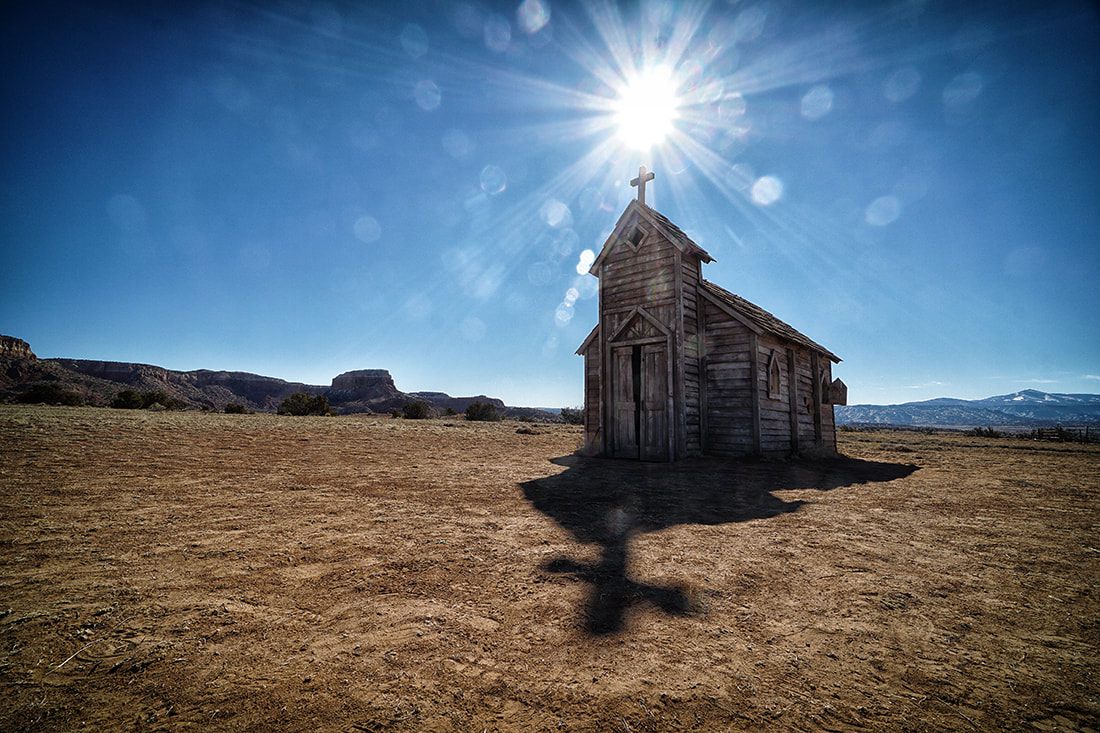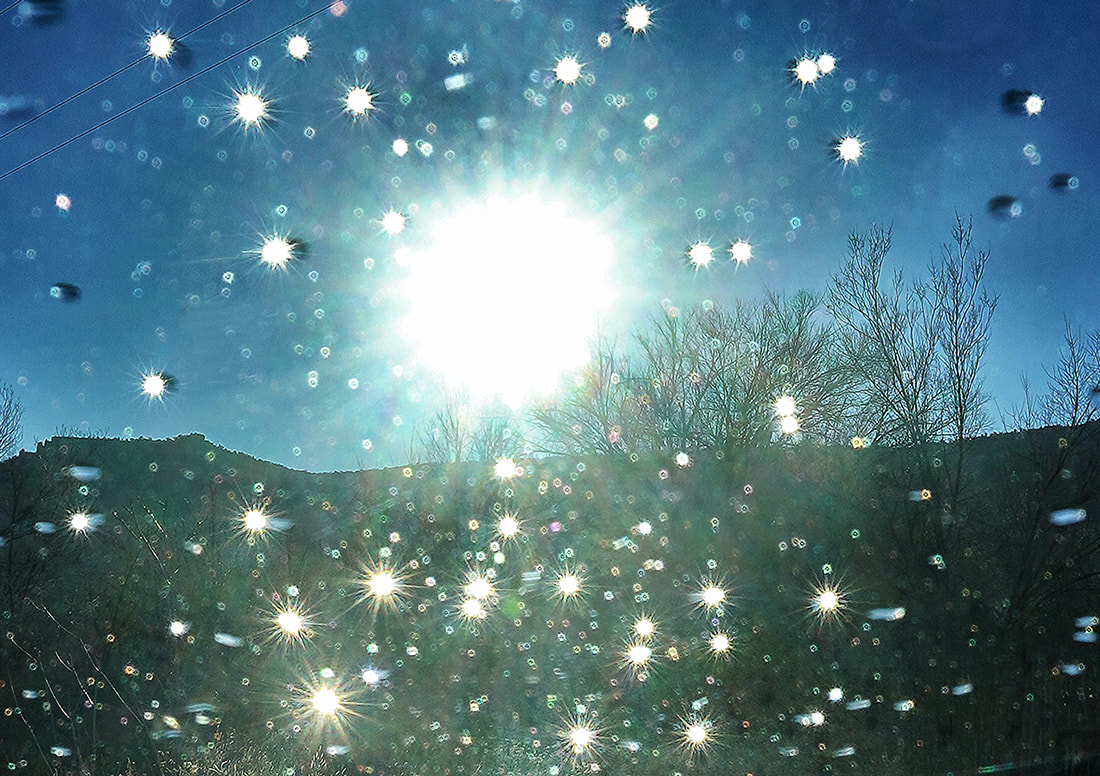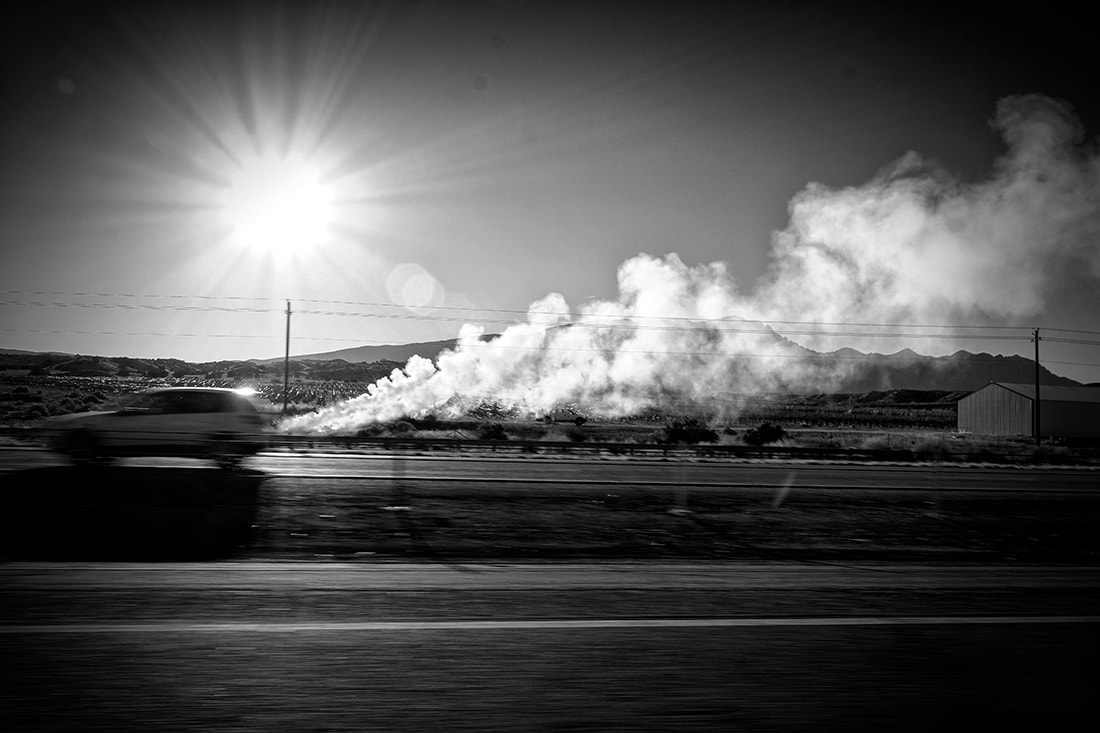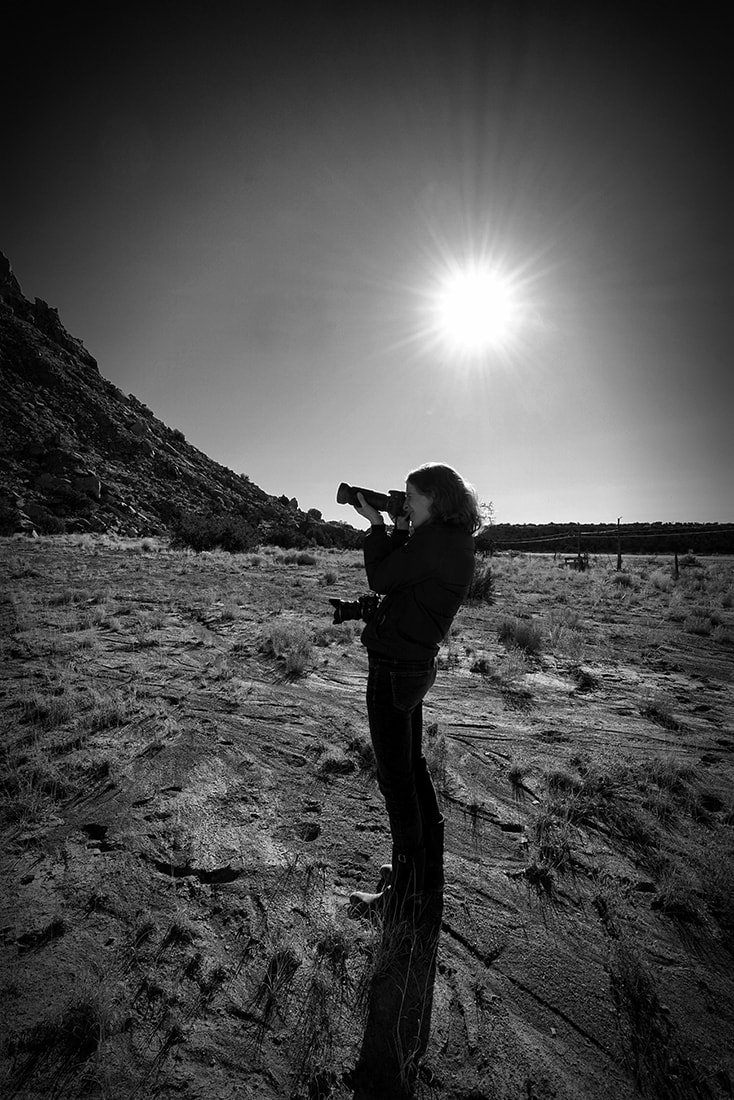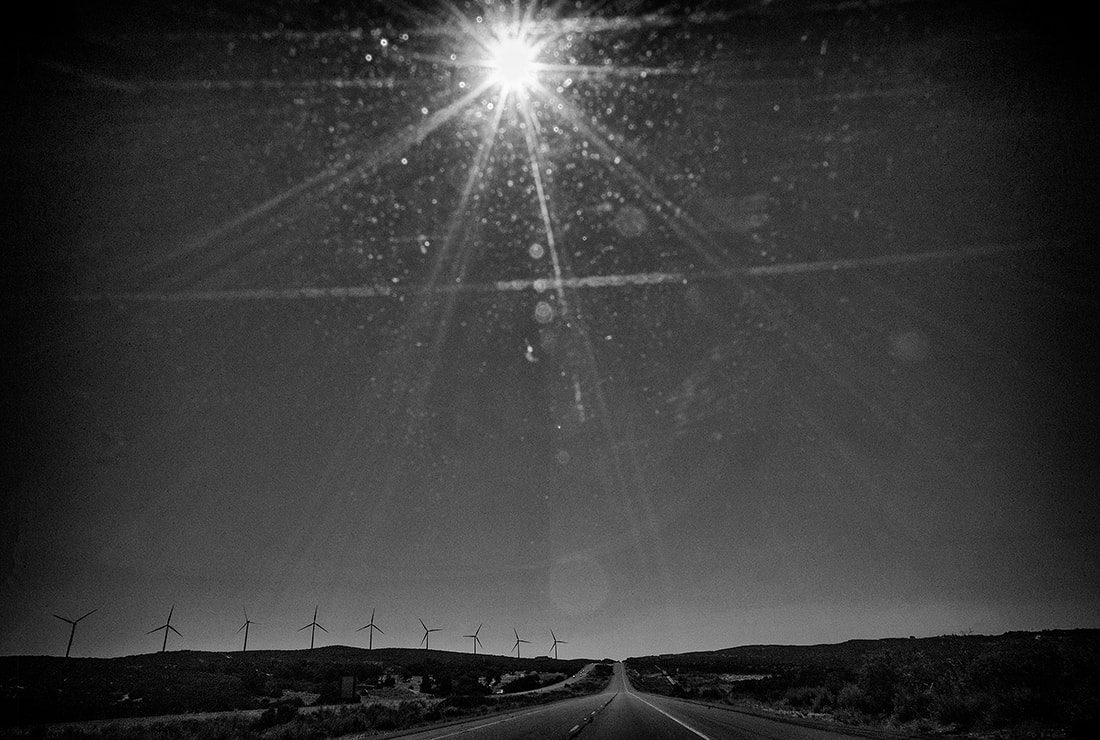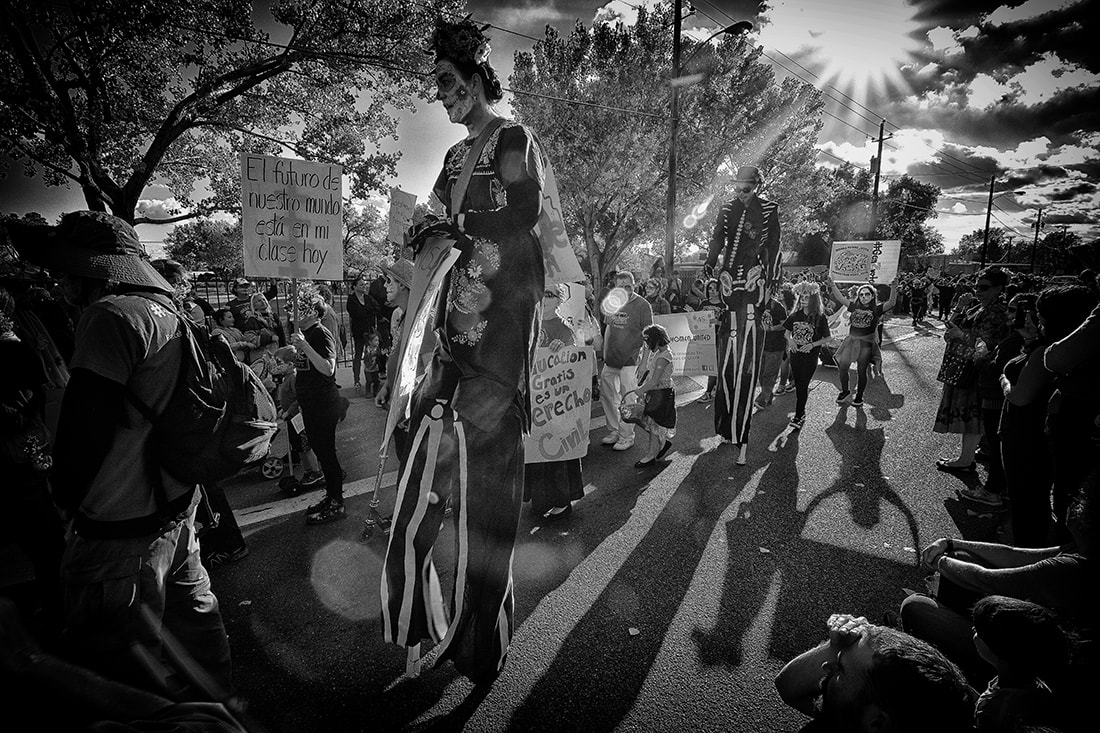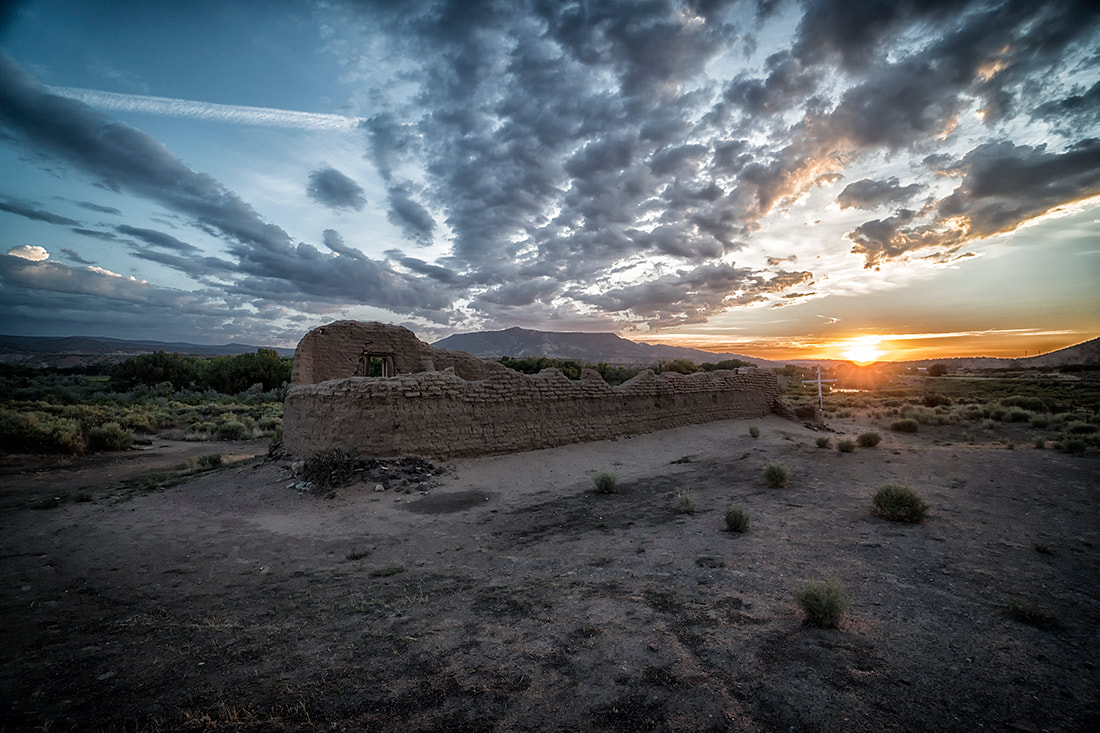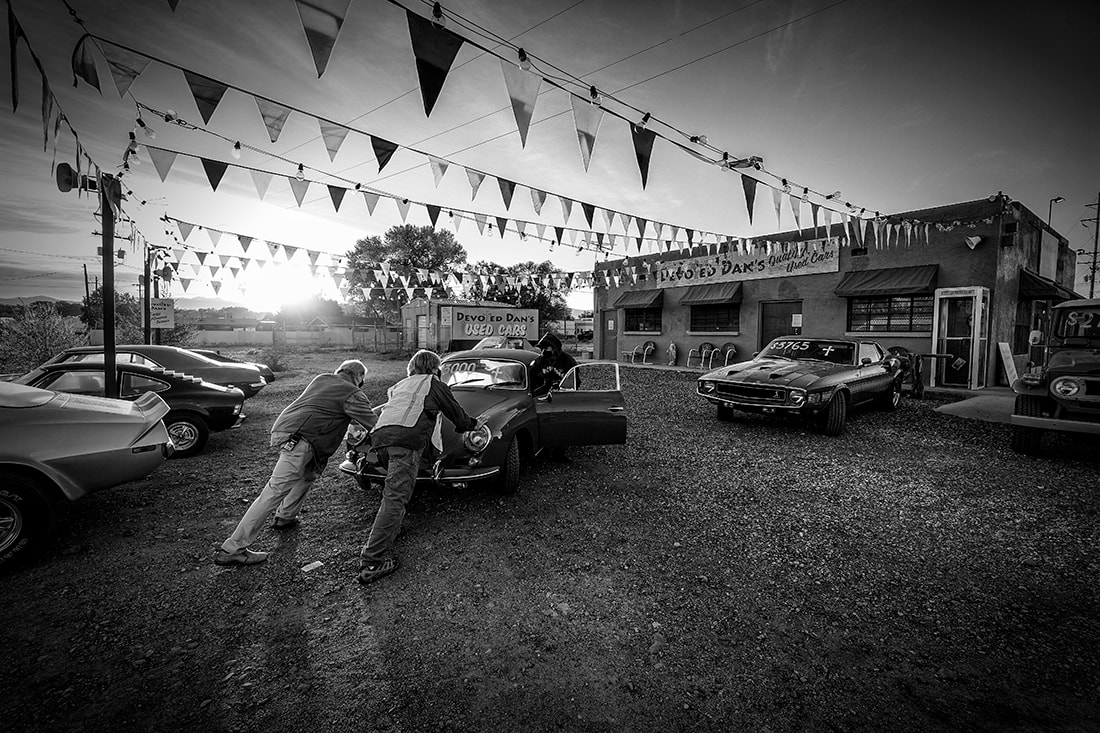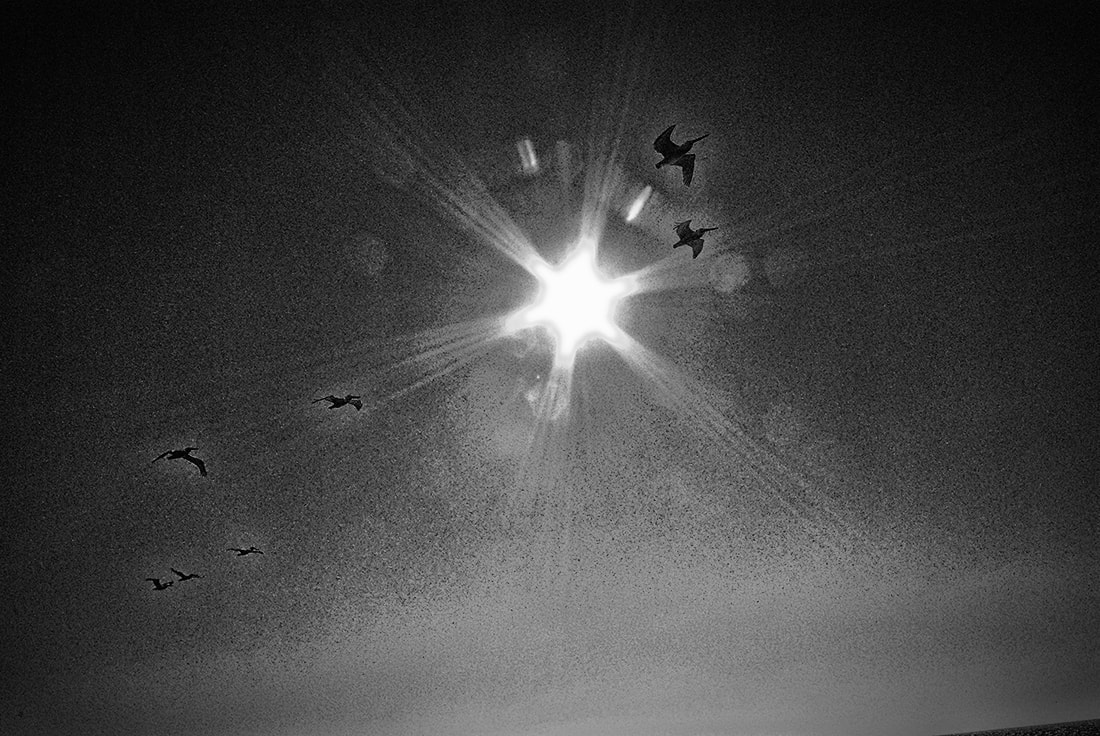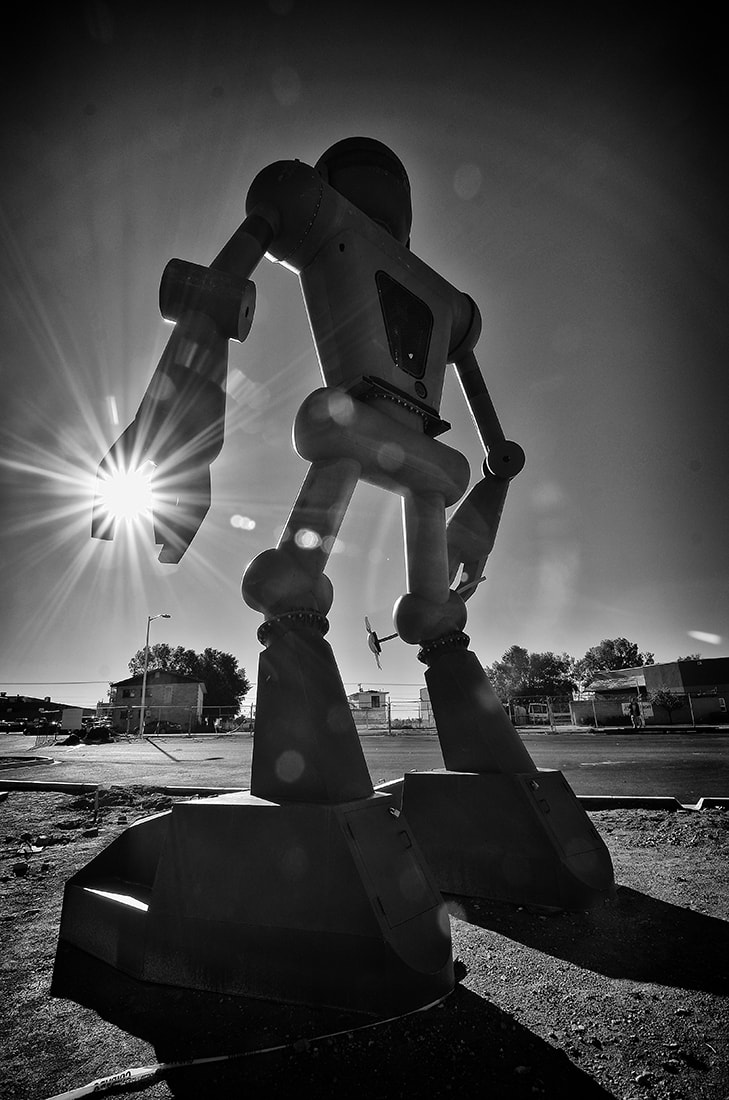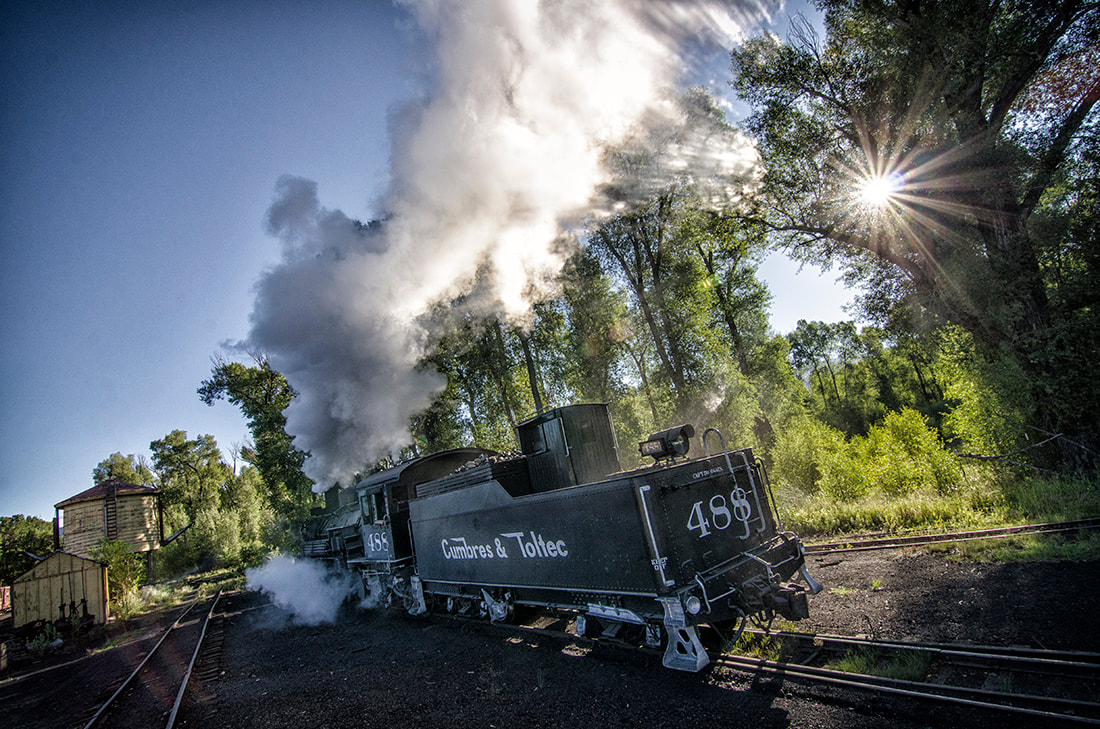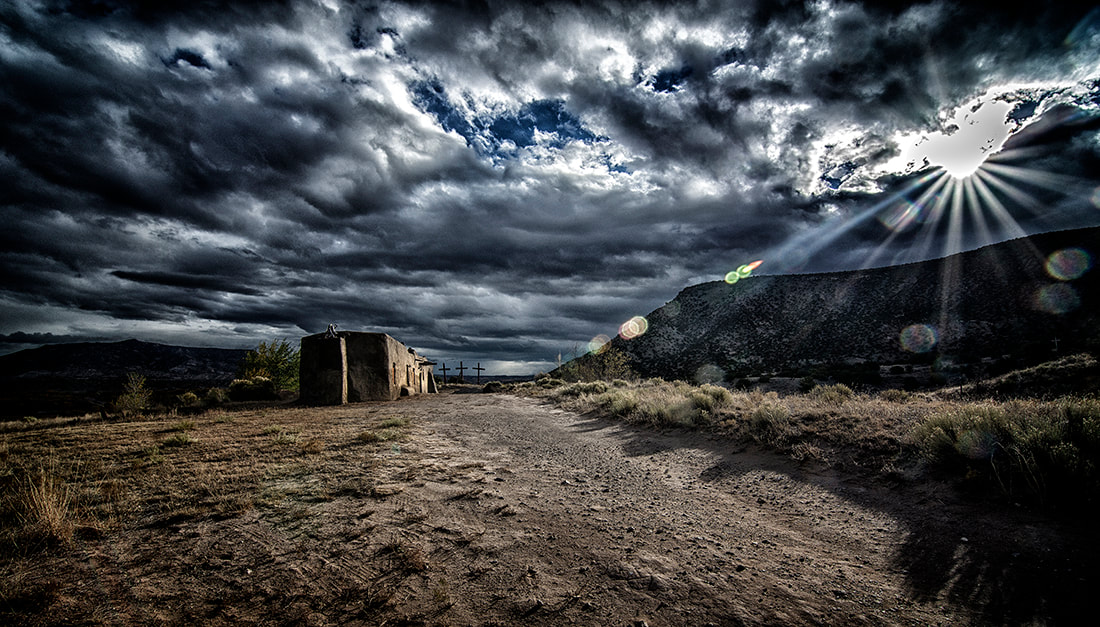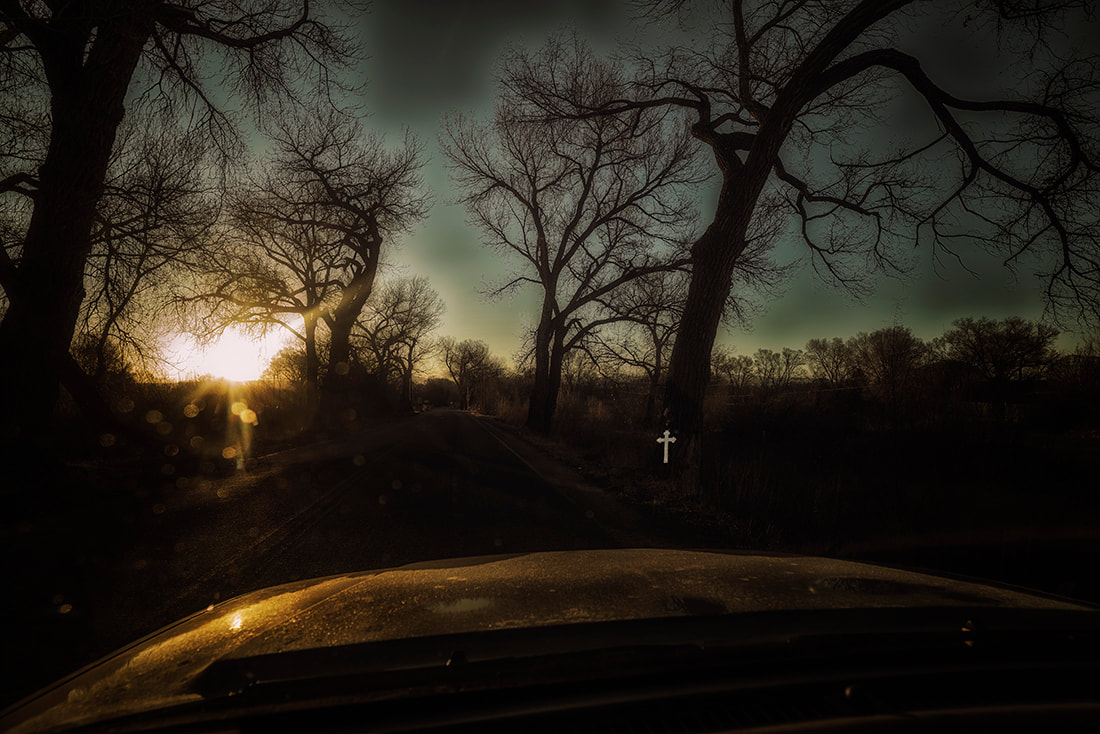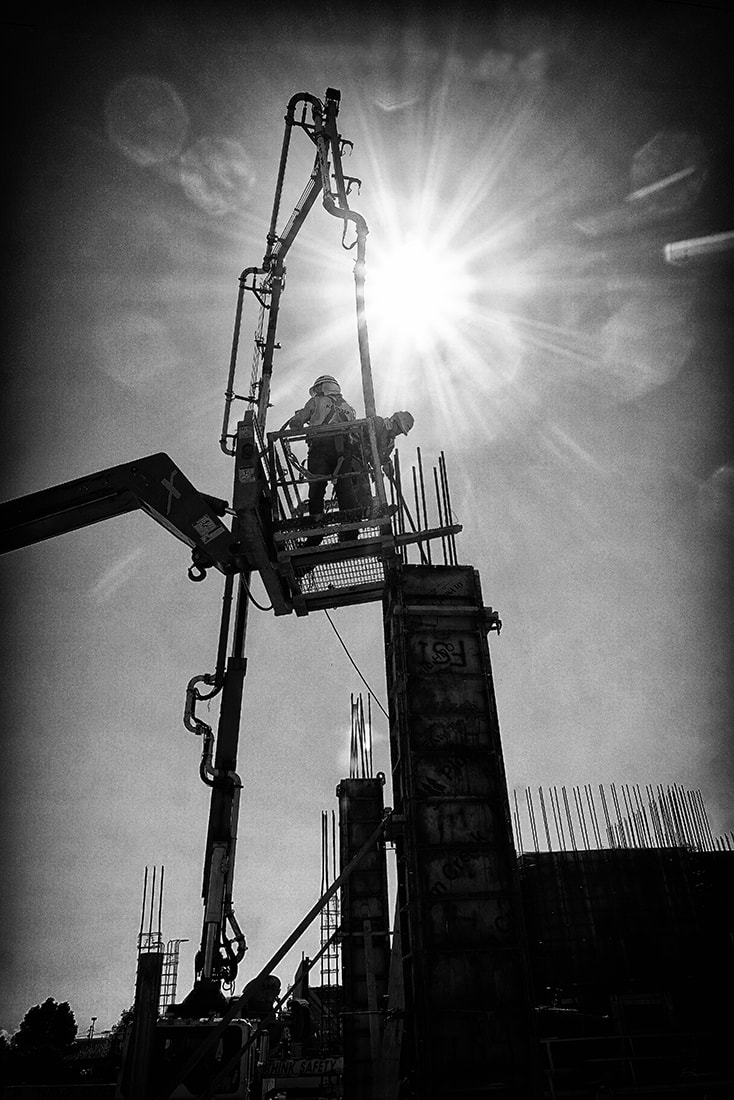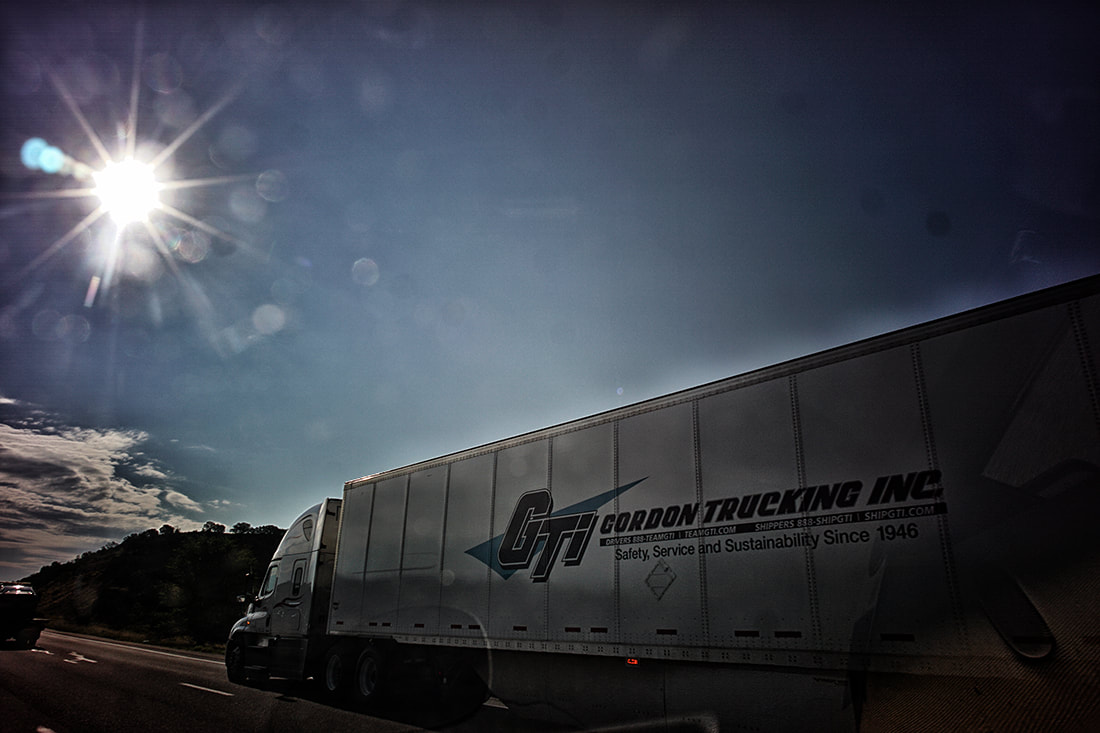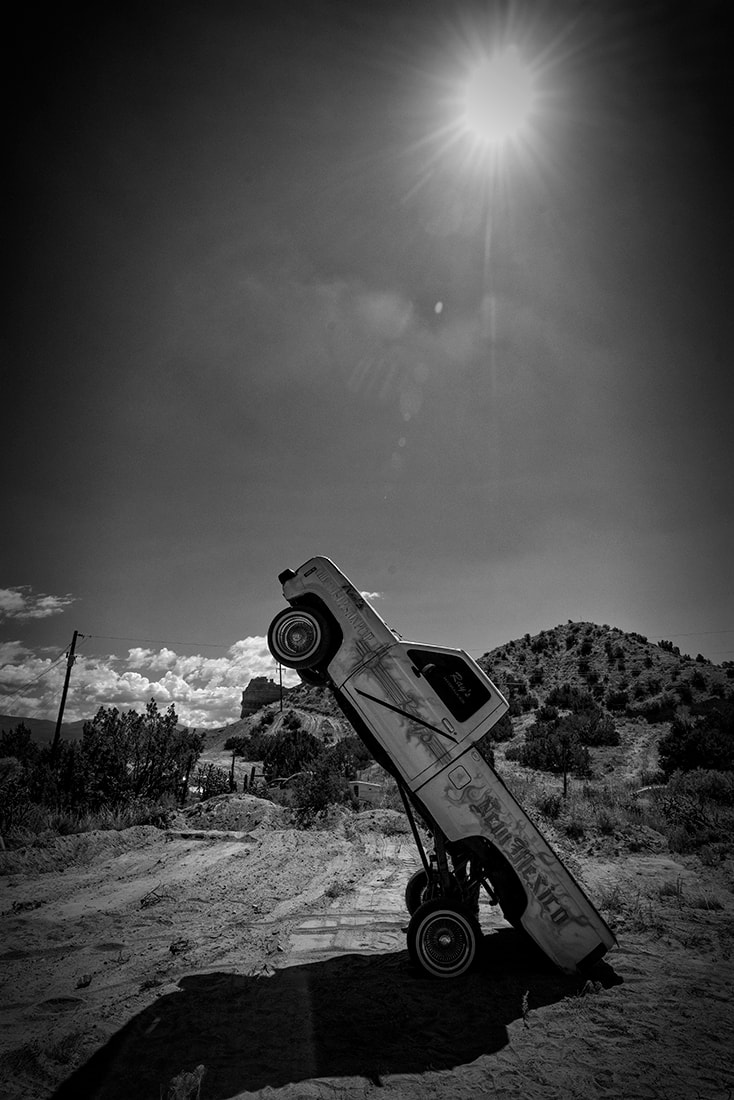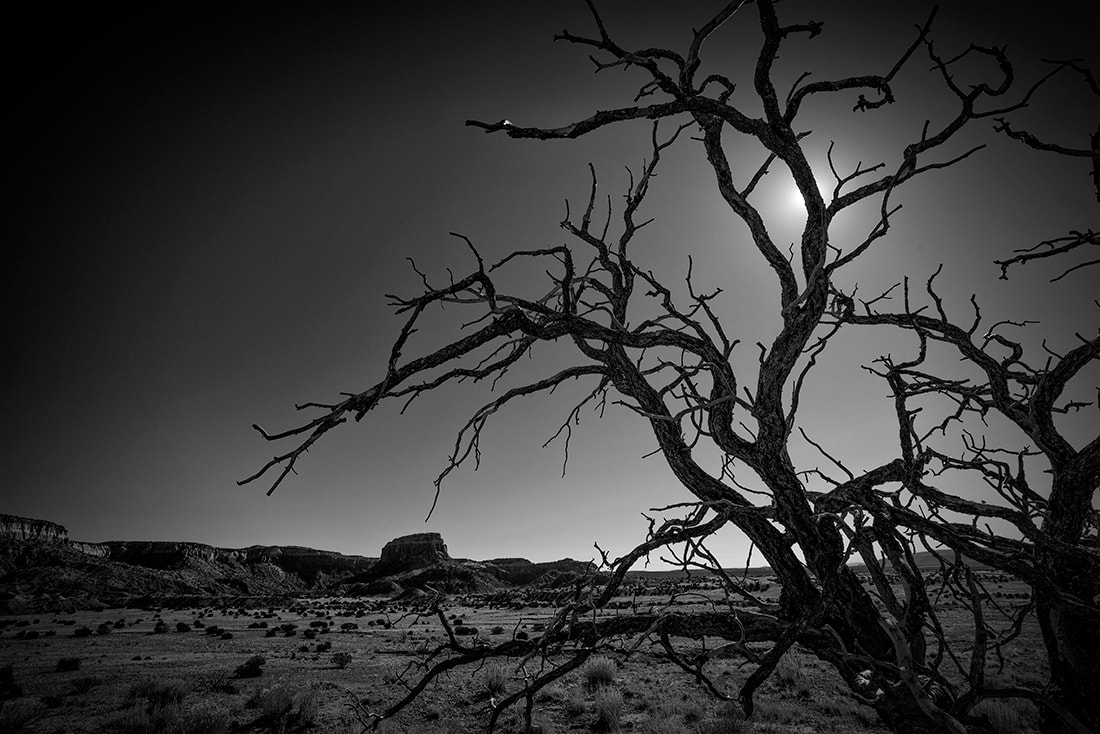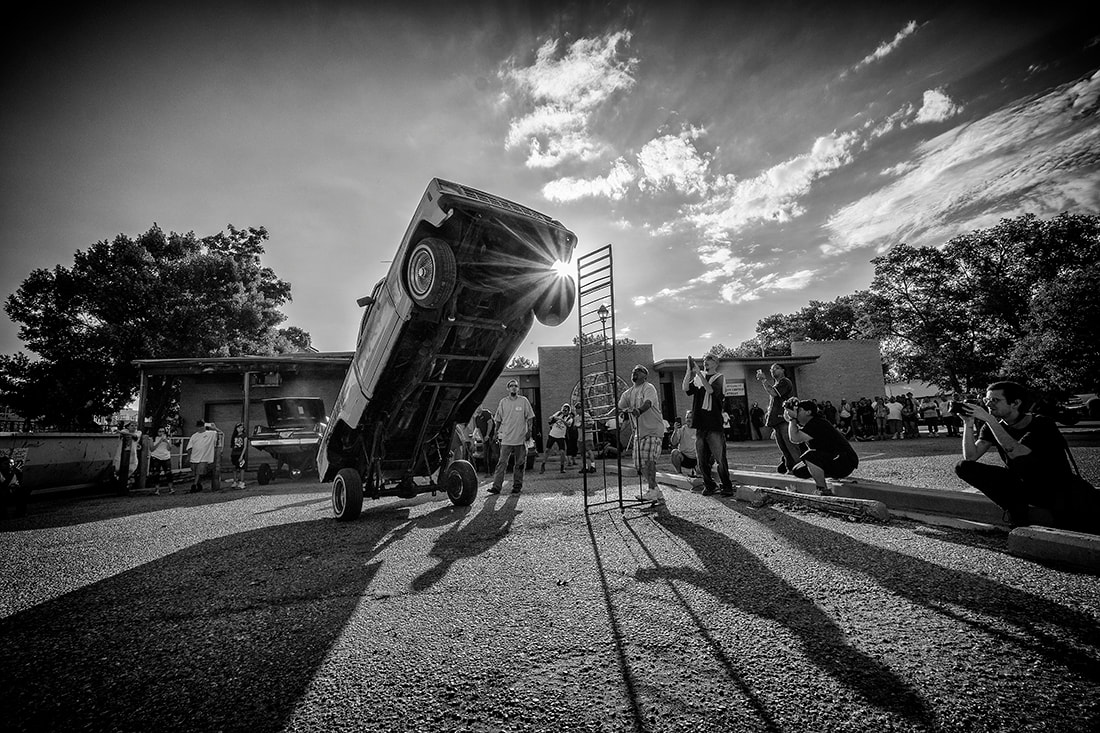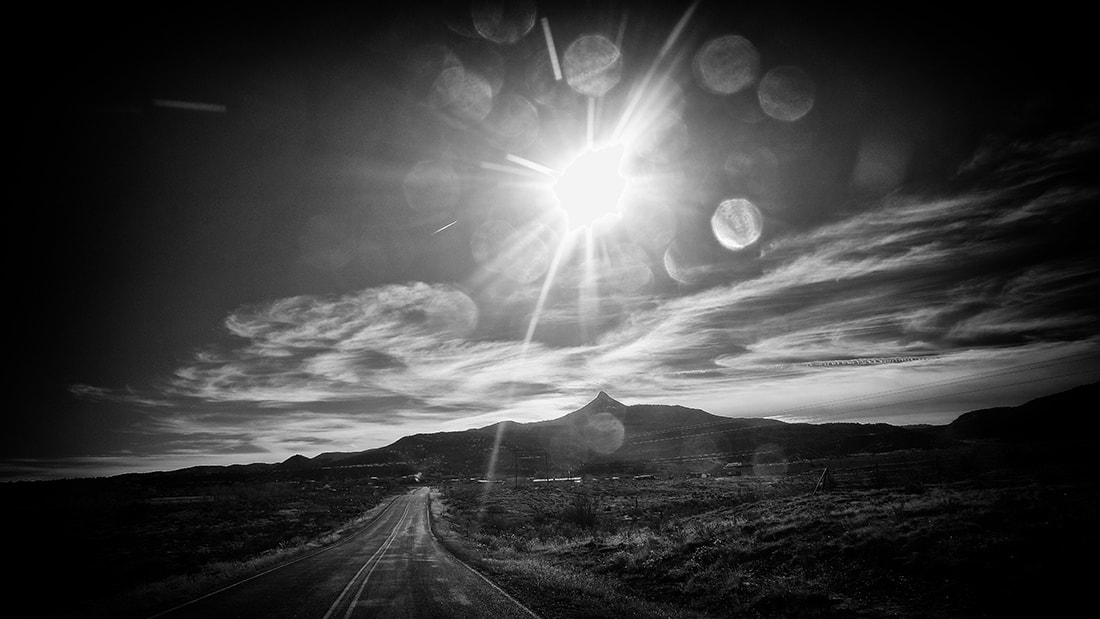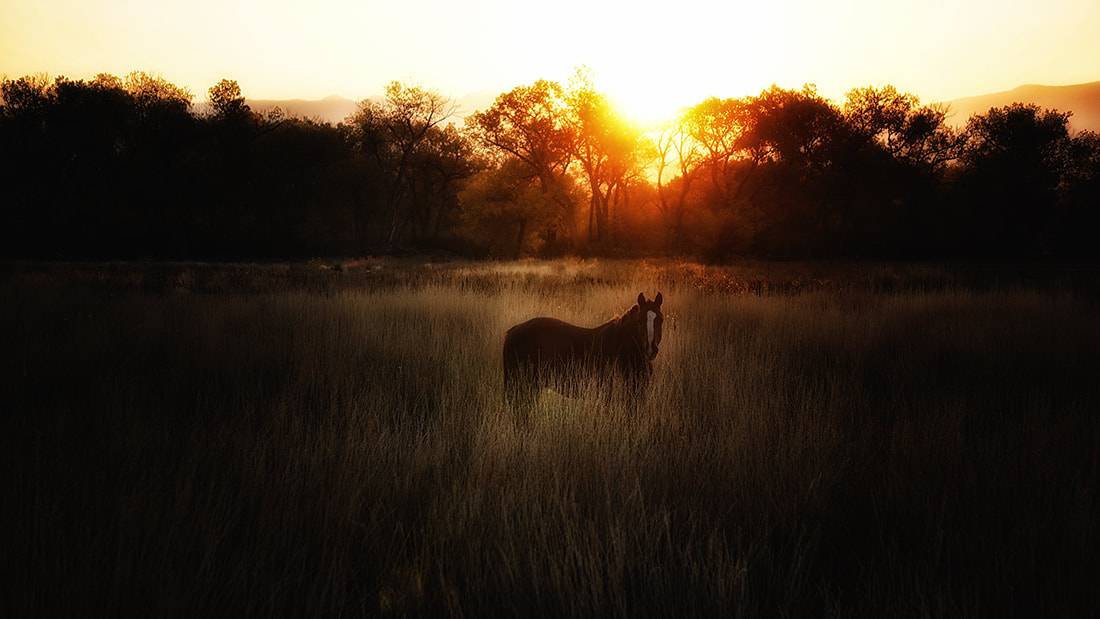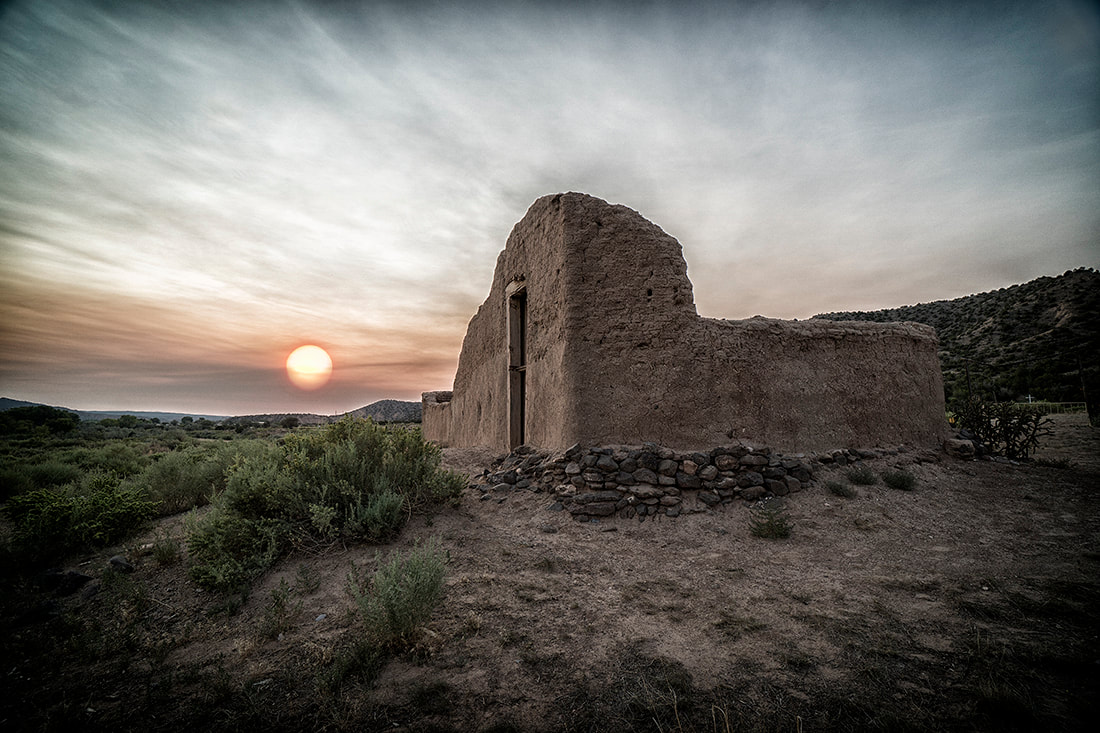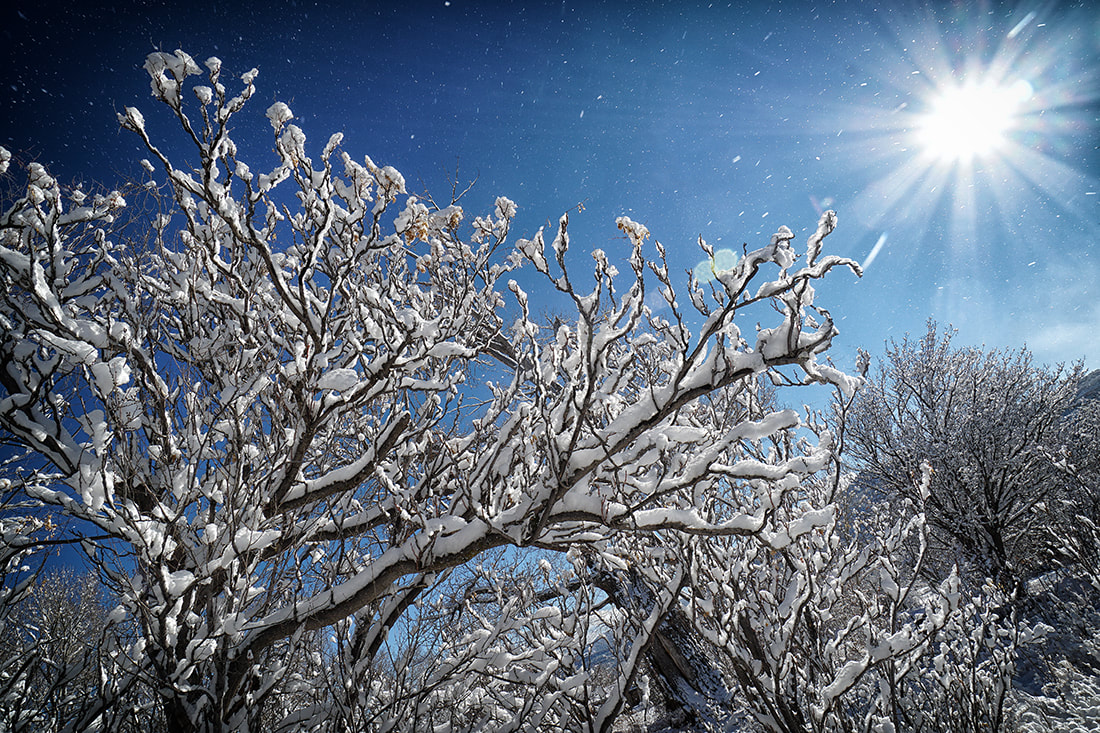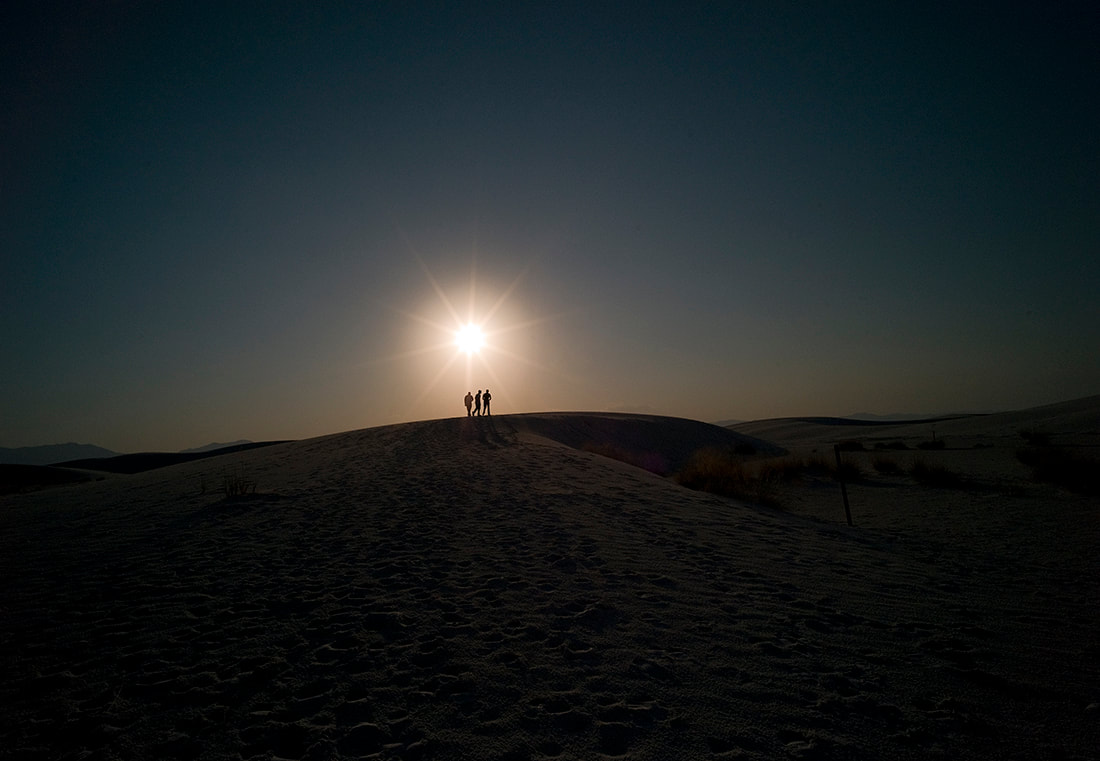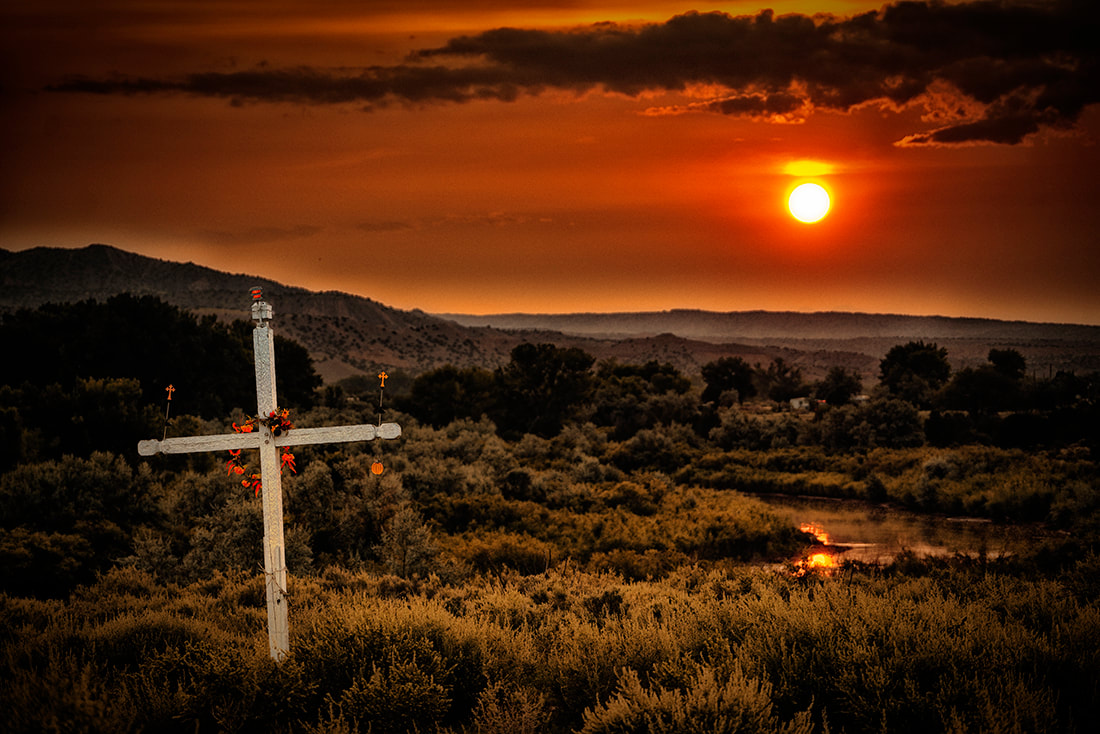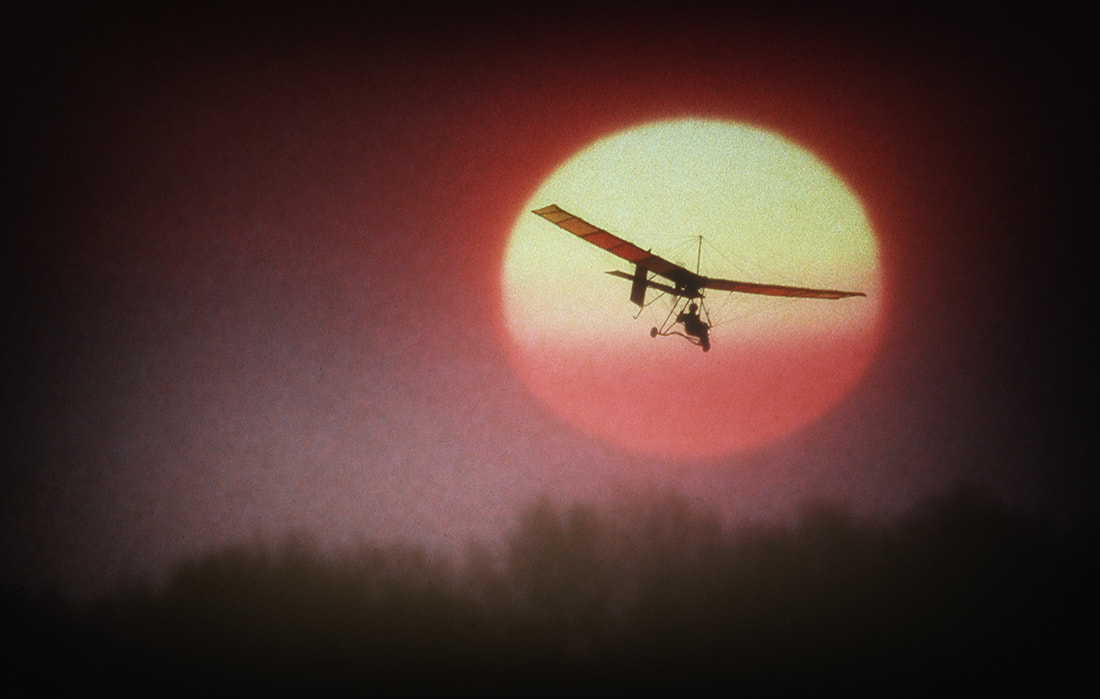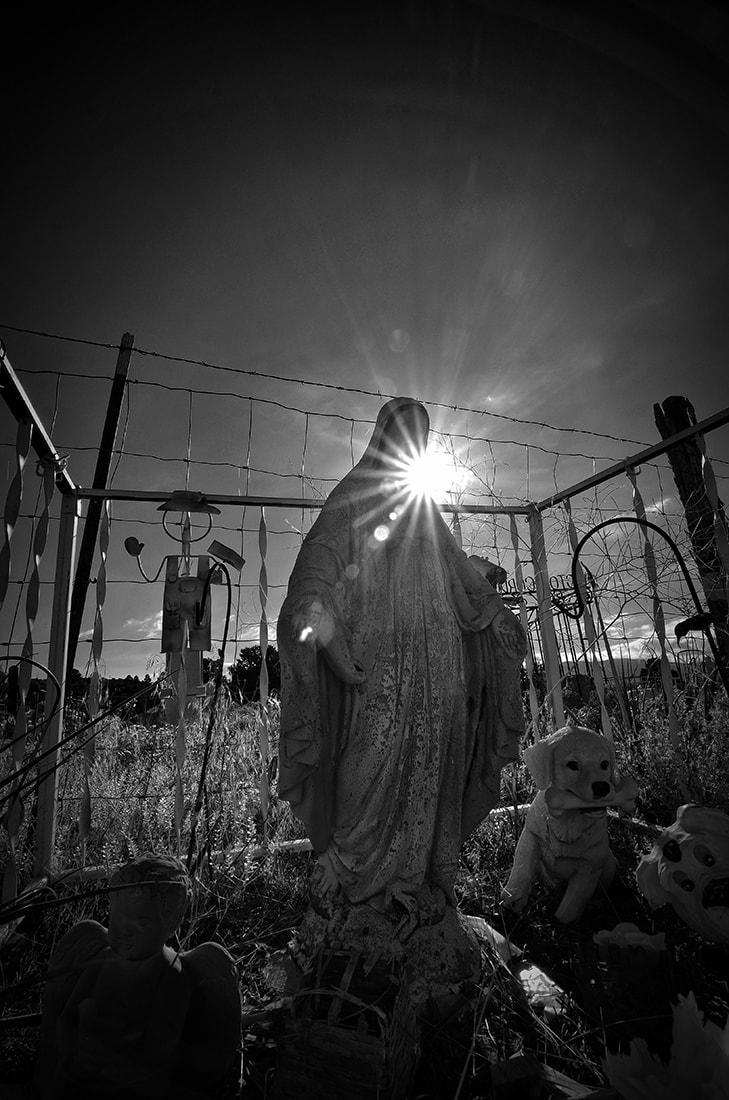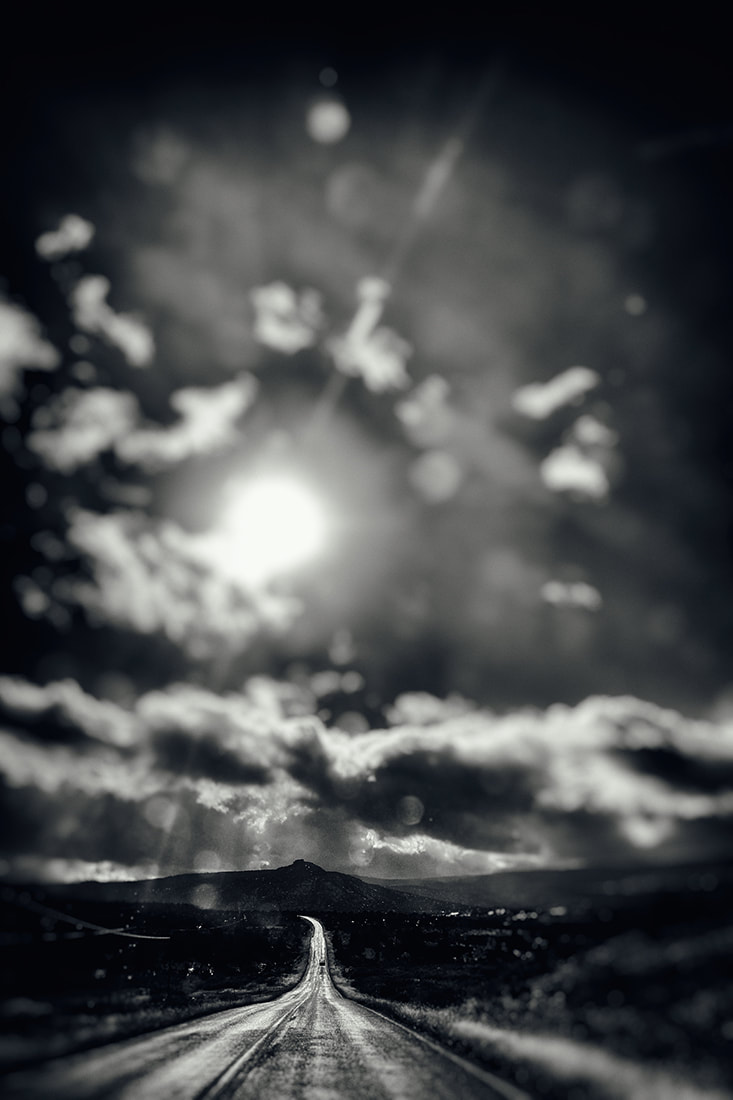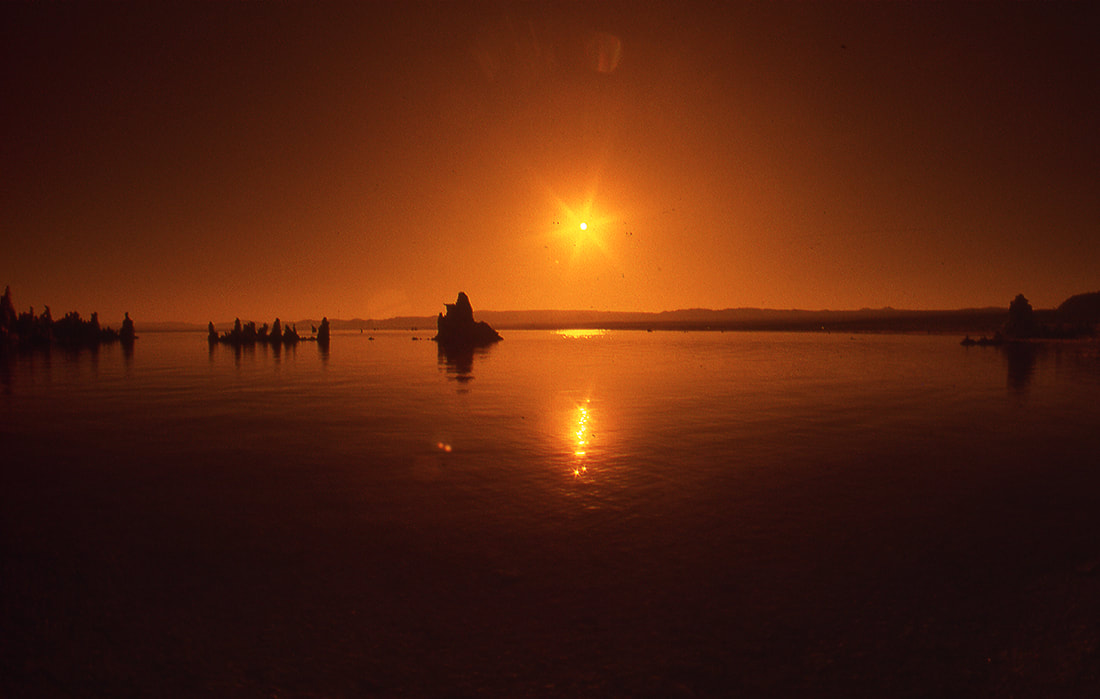Shooting Into The Sun
A small church used in a movie filmed at Ghost Ranch, Abiquiu, New Mexico
In the days of film photography, one of the “rules” that seemed to be set in stone was always to have the sun at your back. It was a real no-no to aim your camera into the sun.
One of the reasons was your subject was likely to be underexposed.
When you purchased a roll of Kodak film, in the box with the film was an instruction sheet. It offered suggestions on exposure in various lighting conditions and tips of the best way to take a good photo. One of those suggestions was, yes, “Don’t photograph with you camera aimed at the sun.”
I’ve always been a bit contrary, and following rules wasn’t my favorite exercise.
With that said, I find myself taking photographs often into the sun.
A few of the reasons I often am aiming at the sun: I like to experiment and shooting into the sun often results in surprising, unexpected results; a photograph taken into the sun often results in cool sunbursts and sun stars. And I like silhouettes, which are often the result of a backlit subject.
Silhouettes and a sun star or sunburst — how cool is that?
That’s not to say shooting into the sun always produces these pleasing sunbursts and sun stars. One of the most common result is lens flare, where you end up with blobs — “blobs” being a technical photographic term — of light colors that seem to interfere more with the composition than add anything to it.
Including the sun in your image often offers a really strong point of focus for the viewer’s eye. Put the sun behind your subject and the eye is immediately drawn to it.
When it comes to sunbursts and sun stars, all lenses are not created equal, and depending upon the aperture, results can vary greatly, even using the same lens and photographing the same subject.
And when shooting into the sun, surprises — some pleasant, so not so much — are common occurrences.
Recently I encountered one of those surprises (below)
One of the reasons was your subject was likely to be underexposed.
When you purchased a roll of Kodak film, in the box with the film was an instruction sheet. It offered suggestions on exposure in various lighting conditions and tips of the best way to take a good photo. One of those suggestions was, yes, “Don’t photograph with you camera aimed at the sun.”
I’ve always been a bit contrary, and following rules wasn’t my favorite exercise.
With that said, I find myself taking photographs often into the sun.
A few of the reasons I often am aiming at the sun: I like to experiment and shooting into the sun often results in surprising, unexpected results; a photograph taken into the sun often results in cool sunbursts and sun stars. And I like silhouettes, which are often the result of a backlit subject.
Silhouettes and a sun star or sunburst — how cool is that?
That’s not to say shooting into the sun always produces these pleasing sunbursts and sun stars. One of the most common result is lens flare, where you end up with blobs — “blobs” being a technical photographic term — of light colors that seem to interfere more with the composition than add anything to it.
Including the sun in your image often offers a really strong point of focus for the viewer’s eye. Put the sun behind your subject and the eye is immediately drawn to it.
When it comes to sunbursts and sun stars, all lenses are not created equal, and depending upon the aperture, results can vary greatly, even using the same lens and photographing the same subject.
And when shooting into the sun, surprises — some pleasant, so not so much — are common occurrences.
Recently I encountered one of those surprises (below)
I went to start my pickup truck and there were water drops from melted frost on the windshield and they were backlit by the rising sun and casting shadows on the droplets onto the dash.
I thought it looked rather enticing in an abstract sort of way so I took a couple of photos with a Sony A9 and a Zeiss Batis 2.8/18mm lens and then went about my day.
When I got home, I downloaded the pics onto my computer and was surprised when I found that each water droplet, instead of appearing as a droplet, appeared as a small starlet, making the scene look more like a glimpse of a far off universe than water droplets on a windshield here on earth.
A Voigtlander Super Wide-Heliar 15mm f/4.5 often creates very distinct rays such as the ones seen in the early morning Abiquiu morada photo.
A Sony E-mount 10-18mm OSS lens produces a celestial type of star such as the one above the small church at Ghost Ranch (shown above) and behind the construction workers in Old Town Albuquerque and the lovely sun star behind Eppie Martinez’s hopping lowrider truck at Lowrider Day in Espanola, New Mexico (below).
A Technical Note: There are some reasons people might warn you against shooting into the sun, two of which are: damage to eyes, damage to your sensor.
(1) I, like you, value my eyes, so I don’t look at the sun through the viewfinder but use the LCD screen (2) and since I’ve been shooting into the sun for a number of years with digital cameras, I’ve never had any problems with the sun causing damage to my camera’s sensors.
Below are some examples of my pointing my camera lens at the sun. My apologies to Kodak for not following the rules.
I thought it looked rather enticing in an abstract sort of way so I took a couple of photos with a Sony A9 and a Zeiss Batis 2.8/18mm lens and then went about my day.
When I got home, I downloaded the pics onto my computer and was surprised when I found that each water droplet, instead of appearing as a droplet, appeared as a small starlet, making the scene look more like a glimpse of a far off universe than water droplets on a windshield here on earth.
A Voigtlander Super Wide-Heliar 15mm f/4.5 often creates very distinct rays such as the ones seen in the early morning Abiquiu morada photo.
A Sony E-mount 10-18mm OSS lens produces a celestial type of star such as the one above the small church at Ghost Ranch (shown above) and behind the construction workers in Old Town Albuquerque and the lovely sun star behind Eppie Martinez’s hopping lowrider truck at Lowrider Day in Espanola, New Mexico (below).
A Technical Note: There are some reasons people might warn you against shooting into the sun, two of which are: damage to eyes, damage to your sensor.
(1) I, like you, value my eyes, so I don’t look at the sun through the viewfinder but use the LCD screen (2) and since I’ve been shooting into the sun for a number of years with digital cameras, I’ve never had any problems with the sun causing damage to my camera’s sensors.
Below are some examples of my pointing my camera lens at the sun. My apologies to Kodak for not following the rules.
I-25 near Bernalillo, New Mexico
Molly Montgomery near Ghost Ranch, Northern New Mexico
Wind farm east of San Diego, California
Day of the Dead Marigold Parade in Albuquerque's South Valley
Santa Rosa de Lima church ruins in Abiquiu, New Mexico
Workers on a film set in Española, New Mexico
Pelicans, Ocean Beach, San Diego, California
Giant figure outside Meow Wolf, Santa Fe, New Mexico
Cumbres and Toltec Railroad locomotive prepares to load water at the Chama, New Mexico, station before departing for Colorado
Penitente morada at sunrise in Abiquiu, New Mexico
Ohkay Owingeh Puebo, Northern New Mexico, descanso (roadside cross) at sunrise
Construction workers prepare cement form in Old Town Albuquerque, New Mexico
Semi with starburst flare, I-25 between Albuquerque and Santa Fe, New Mexico
Funeral for iconic lowrider Ray Martinez, of Chimayo, New Mexico. The truck shown was one that Martinez had won many hopping contest with over the years. After his death the truck was retired, never to enter a hopping contest again.
Landscape near Ghost Ranch, Abiquiu, Northern New Mexico
Eppie Martinez winning a lowrider hopping contest with his father Ray Martinez's pickup truck during Lowrider Day in Espanola, New Mexico
Cerro Pedernal seen from Highway 96 in Youngsville, New Mexico
A horse illuminated by the rising sun, Espanola, New Mexico
Santa Rosa de Lima church ruins with rising sun, Abiquiu, New Mexico
Snowy branches and sunburst
White Sands National Monument at sunset
Cross and Rio Chama, at sunrise, Abiquiu, New Mexico
Weedhopper ultralight aircraft at sunset
Cemetery in Truchas, New Mexico
Nearing Coyote, New Mexico, Highway 96, Northern New Mexico
Mono Lake, Northern California
To contact Bob Eckert for assignments, consultations or workshops, please email [email protected]
or use the contact form on the About page
or use the contact form on the About page
